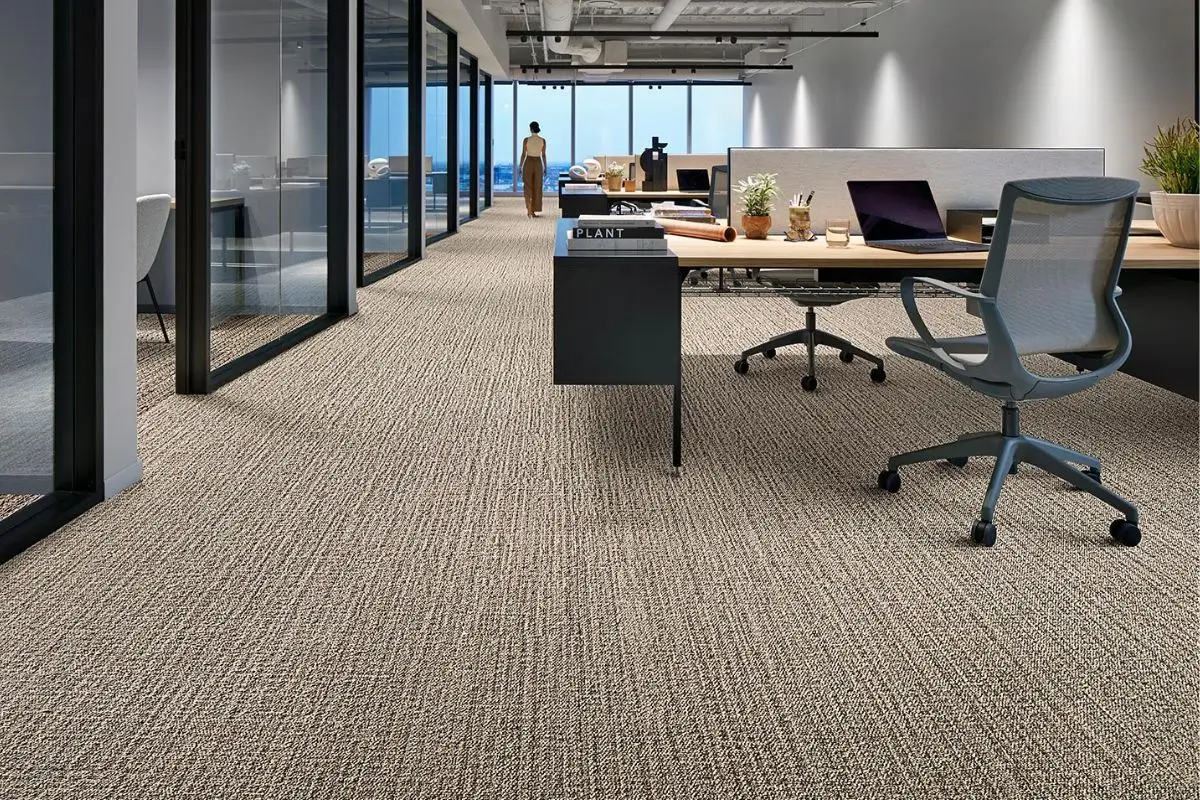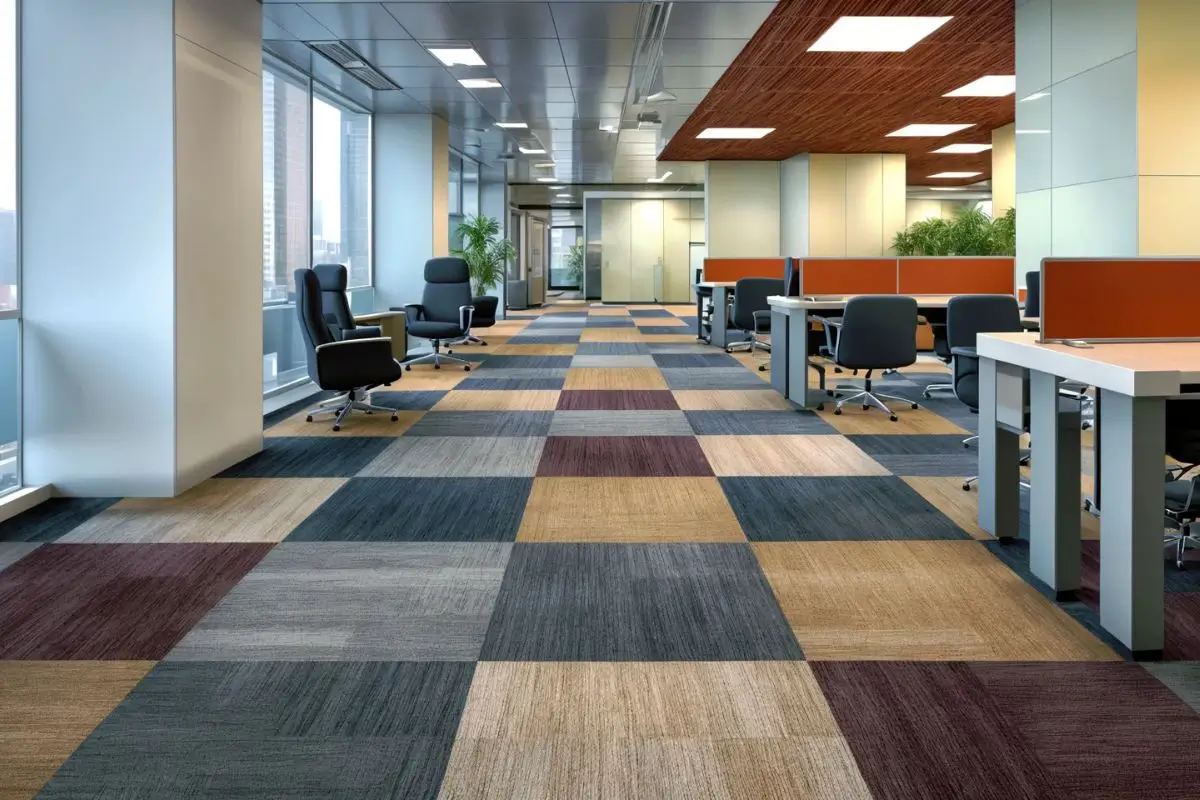Office carpets are a significant investment in commercial spaces, enhancing the aesthetics and comfort of the workplace. However, due to high foot traffic and wear, carpets can deteriorate over time. The key question is: How often should office carpets be replaced? The answer depends on various factors, including maintenance, traffic levels, and the type of carpet. In this guide, we explore the best practices to extend the life of office carpets, ensuring they remain functional and visually appealing for as long as possible.
Understanding the Lifespan of Office Carpets
The lifespan of office carpets typically ranges between 5 to 15 years, depending on the material and traffic. High-quality carpets made from durable fibers like nylon or wool can last longer, especially if they’re well-maintained. Conversely, cheaper, synthetic carpets may show signs of wear much sooner. Additionally, the environment plays a critical role in determining how long a carpet will last. Offices with high foot traffic, heavy furniture, and frequent spills can experience faster deterioration. Regular maintenance, such as professional cleaning and proper care, can help maximize the lifespan, delaying the need for replacement.
Factors That Affect Carpet Durability
Several factors influence the durability of office carpets. The primary factor is foot traffic—areas with high volumes of movement will wear out quicker. Carpet type is another determinant: loop pile carpets generally last longer than cut pile due to their more durable structure. Carpet fiber is also crucial, with synthetic fibers such as nylon being more durable than natural fibers like wool. Other environmental factors, including humidity, sunlight exposure, and spills, can accelerate wear. By understanding these factors, businesses can make informed decisions about carpet maintenance and replacement.
Signs That It’s Time to Replace Your Carpet
Certain visible signs can help identify when it’s time to replace office carpets. These include persistent stains, fraying edges, and noticeable discoloration. Over time, carpets lose their texture and appear matted, particularly in high-traffic areas. If vacuuming and cleaning don’t restore the carpet’s appearance, it’s a sign that the fibers have worn down. In some cases, an unpleasant odor may linger, even after cleaning, indicating that the carpet has absorbed moisture or contaminants. When these signs become evident, it’s time to assess whether a replacement is needed.
Maintaining Carpet Quality to Extend Its Life
Regular maintenance is essential to extending the life of office carpets. Vacuuming daily or at least twice a week helps remove dirt and debris, which can wear down fibers over time. In addition, professional deep cleaning should be performed annually to remove embedded dirt, oils, and allergens that regular cleaning can’t address. Carpet protection treatments such as stain guard sprays can also help prevent permanent damage. For high-traffic areas, consider using rugs or mats to absorb some of the wear and tear, further prolonging the life of the carpet.
How Traffic Levels Impact Carpet Longevity
The level of foot traffic in an office directly affects how often carpets need to be replaced. High-traffic areas, such as hallways, entrances, and near desks, experience more wear and tear, leading to faster degradation. In these zones, the carpet fibers become flattened, and the carpet’s color may fade. Installing durable carpets in high-traffic areas or using rugs and mats to protect these zones can help mitigate the damage. For lower-traffic areas, carpets tend to last longer, requiring less frequent replacement. Adjusting maintenance schedules for high-traffic zones can also help preserve the carpet’s integrity.
The Role of Carpet Padding in Durability
Carpet padding plays a vital role in enhancing the comfort and longevity of office carpets. It acts as a cushion that absorbs impact, reducing the wear on carpet fibers. Over time, padding can lose its effectiveness, particularly in high-traffic areas, causing the carpet to degrade faster. If the padding is damaged or compressed, it may be necessary to replace it to prevent further damage to the carpet. Quality padding can also improve sound absorption and insulation, contributing to a more comfortable work environment. Regular inspection of carpet padding is recommended as part of an office carpet maintenance plan.
Professional Cleaning to Extend Carpet Life
Professional carpet cleaning is an essential service for prolonging the life of office carpets. Even with regular vacuuming, dirt, oils, and allergens can become embedded in carpet fibers. Professional cleaners use specialized equipment and techniques, such as hot water extraction, to thoroughly clean carpets and remove these contaminants. Regular professional cleaning, ideally every 12 to 18 months, helps maintain carpet appearance and prevents the buildup of damaging substances. It also helps protect the carpet warranty, as some manufacturers require proof of regular professional cleaning to honor claims.
Choosing the Right Carpet Material for Longevity
When selecting office carpets, the material plays a significant role in how long the carpet will last. Nylon is one of the most durable and stain-resistant fibers, making it ideal for commercial spaces with high foot traffic. Polyester offers a more affordable option but may not be as durable as nylon. Wool carpets are luxurious but can wear out quicker in busy office environments. Other materials, such as olefin or polypropylene, are often used for budget-friendly options but may not last as long as more durable fibers. Choosing the right material based on the office’s specific needs can lead to a longer-lasting carpet.
Environmental Factors Affecting Carpet Health: What You Can Do to Protect Your Investment
Environmental factors such as humidity, temperature, and sunlight exposure can have a significant impact on the lifespan of office carpets. High humidity levels can promote mold and mildew growth in carpets, especially in poorly ventilated areas. Direct sunlight can cause fading and weakening of carpet fibers over time. To minimize these effects, office spaces should be properly ventilated, and carpets should be kept out of direct sunlight when possible. Installing blinds or UV-protective window films can also help reduce sun damage. By addressing these environmental factors, businesses can help maintain the health of their carpets for longer.
Eco-Friendly Office Carpets: Durable, Sustainable, and Stylish Options for Your Business
In today’s environmentally-conscious world, businesses are increasingly opting for eco-friendly carpets. These carpets are made from sustainable materials such as recycled fibers or natural fibers like jute and sisal. Some eco-friendly carpets are designed for durability, requiring less frequent replacement and thus reducing waste. Additionally, eco-friendly carpets tend to have low-VOC (volatile organic compound) emissions, contributing to better indoor air quality. Choosing eco-friendly options can also be part of a company’s sustainability efforts, making the office a greener, healthier environment while still providing the durability and aesthetic appeal needed in commercial spaces.
Conclusion
Replacing office carpets is an inevitable part of maintaining a commercial space, but with proper care and attention, businesses can significantly extend the life of their carpets. Regular cleaning, understanding traffic patterns, using high-quality materials, and taking preventive measures can all contribute to a longer-lasting carpet. Businesses should also be mindful of environmental factors and consider eco-friendly options to enhance both sustainability and durability. By investing in carpet maintenance and making informed choices, companies can preserve their office flooring for years to come, reducing the need for frequent replacements and saving on long-term costs.





